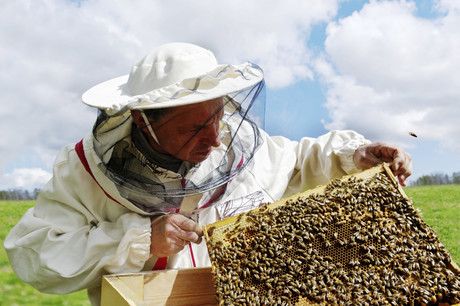Lead found in NSW bees and honey

Depending on where you live, you may be consuming honey that contains high levels of lead, according to a study conducted by Macquarie University researchers.
Published in Environmental Science & Technology, researchers traced contaminating metals in soil and dust, and in bees and their products. They found that whatever pollution is let into the local environment ultimately becomes recycled into nearby food and ecological systems.
This explains why contamination was significantly worse in the centre of Sydney compared to surrounding suburbs. The study found that bees in the CBD, Surry Hills and Newtown had 230–440 µg/kg of lead, whereas in suburbs such as Coogee and Randwick, the bees averaged 125 and 146 µg/kg of lead respectively. The reason for the variations was the location and what the bees were exposed to.
“The lead isotopes showed that background honey bees and their products contained natural lead levels, whereas those from Sydney and Broken Hill were clearly contaminated by legacy petrol sources and ongoing mining emissions, respectively,” said Professor Mark Taylor, leader of the research team.
Galston and Gordon housed bees with the lowest lead levels of 50 and 56 µg/kg. Since they were both located near national parks, researchers believe this was because they were not exposed to as much human activity and traffic pollution.
On the other hand, active mining operations in Broken Hill meant lead levels in bees reached concentrations of around 2570 µg/kg, which impacted the amount of lead found in the honey.
“Honey collected from hives across Sydney contained negligible amounts of lead and didn’t exceed a concentration of 22 µg/kg. However, the amount of lead found in the honey of Broken Hill city bees, which had an average concentration of 295 µg/kg, was more than 10 times the maximum of the bees measured in Sydney,” said Taylor.
“There are very limited contemporary lead emissions in Sydney, which means that air lead levels are approximately 30 times lower than those in Broken Hill, which is why bee contamination was markedly lower,” he continued.
It also depended on the bee itself, as the more a bee forages in the environment and ages, the higher the contamination. Dead worker bees were found to be the most contaminated.
Results also showed that the bees may actually try to filter the contaminants out before they reach the honey, as their bodies contained higher levels of lead than the honey.
So if you want the best honey with the least contamination, location is key.
Maple syrup explored as a potential sugar substitute
The potential health benefits of using pure maple syrup instead of sugar were explored in a...
Regularly eating nuts supports healthy lifespan, research finds
Regular consumption of nuts is associated with maintaining a healthy lifespan, research from a...
Colour supplier GNT recognised for sustainability
The recognition ranks the company among the top 3% in the food manufacturing industry.














